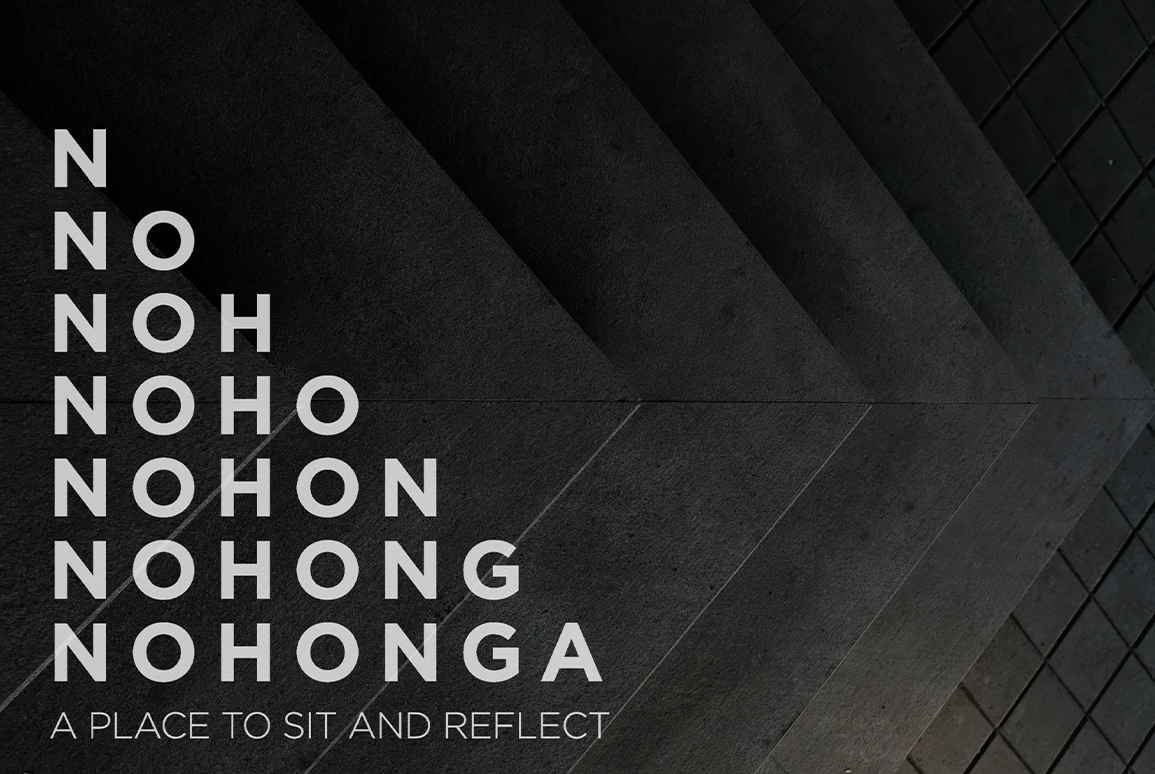Four Boffa Miskell teams enter designs for Nohonga Toru
7 May 2024
The biennial Nohonga Design Challenge is an initiative by the Auckland branch of the New Zealand Institute of Landscape Architects Tuia Pito Ora, launched in 2020.

The design competition challenges students and all levels of graduated landscape architects to design and construct creative nohonga - seat designs - for the citizens of Tāmaki Makaurau. Boffa Miskell teams have been finalists in both the 2020 and 2022 competitions.
Following the 2020 theme of Reflection and Te Ao Hurihanga – Climate Resilience in 2022, this year's competitors were asked to respond to the theme of Haumanu – Renewal / Restoration.
Haumanu challenged entrants to think about how we find balance with nature in the form of a nohonga. How might a nohonga be used to restore and / or inform te taiao, whenua and tangata?

The team comprised of Dana Hills, Jonathon Chan and Rory Gray presented Decomposeat which combines a unique palette of materials with an understanding of natural cycles, and our place within them. The design embraces the temporality of a material’s lifecycle, introducing two timeframes of decomposition.
Composed of timber and cardboard, with embedded fungal spores and legume seeds, the initial fungal decay of cardboard components within 2-6 months, begins a regenerative cycle, becoming a growing medium for pioneering plants, followed by the successional growth and evolution to complex ecosystem of its own. Eventually, the natural cycle takes hold and the timber structure will have fulfilled its purpose as a host – as a nohonga and as well as a foundation for the renewal process.

Luna Cheng and Aynsley Cisaria's design The Whale Fall was inspired by the process of a whale's giant body sinking deep into the ocean floor, and the subsequent decomposition. This entire process could last from a few years to several decades, nourishing an entire ecosystem of sea creatures. Particularly the growth of phytoplankton, which are responsible for at least 50% of all oxygen added to our atmosphere. Whales also accumulate CO2 in their bodies and with each whale fall, sequester on average 33 tons of CO2 from the atmosphere. In comparison, a tree could only capture about 22 kg of carbon yearly.
Their primary material choice saveBOARD, is an exposed internal lining made from shredded and compressed composite packaging. Buoy balls and used fishing nets and floats are also incorporated into the structure, symbolising the approximately 159 grams of plastic waste that the average Kiwi discards each day.

The team of Zak Kelland, Nicole Tune and Hamish Murphy used Ka mua, ka muri — a whakatauki that means "walking backwards into the future" — as the title and inspiration for their nohonga, which expresses the intricate life-cycle of a tree, unveiling its transformative journey through five distinct phases.
Each segment of the seat embodies a distinct phase of the cycle, guiding users through a narrative journey. From the towering presence of Te Wao Nui represented by the felled tree trunk, to the utilisation of timber slats symbolising Te Rauemi, the seat design intricately reflects the essence of each stage. The shape of the seat itself evokes the form of Te Waka, symbolising exploration and new horizons. The raised back and sheltered sides embody the concept of Te Whare, offering users a sense of sanctuary and warmth. Ultimately, the entire nohonga is grounded, serving as a tangible connection to Papatūānuku, completing the cycle. Its alternating orientation provides individuals with the opportunity to align themselves with either Ka Mua or Ka Muri, inviting introspection and engagement with the timeless rhythm of nature’s cycles.

Zak White, Jo Kearney and Alfred Chan collaborated on The Wave, which was the only design to have an embedded kinetic element. The Wave is centred on renewal and balance through the cycle of nature and time, and this seat provides opportunity to engage instinctively through natural human interaction.
The Nohonga is a representation of the cycles of nature and time. It uses the moon phases (Te Rākaunui) as a starting point. The kinetic element of the bench creates a gentle wave motion when its interacted with and then returns to a resting form. The design needs human interaction in order to start the oscillations of the components.
Rachel de Lambert FNZILA is one of the founders of the competition. “The designs put forward by our young landscape architects were all very different, but each one demonstrated a thoughtful response to the brief and some very clever thinking,” says Rachel. "I'm looking forward to seeing how the teams from other practices interpret this year's theme."
A panel of judges, made up of sponsors and Fellows of the Institute, will evaluate all submissions and select four designs to progress through to the build stage.

